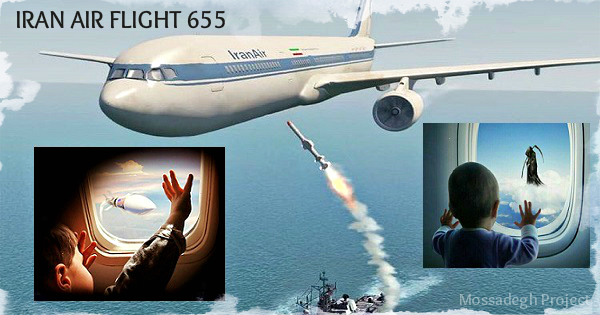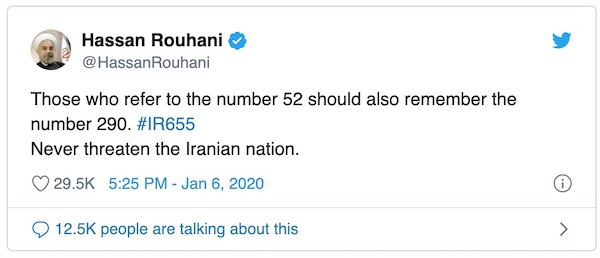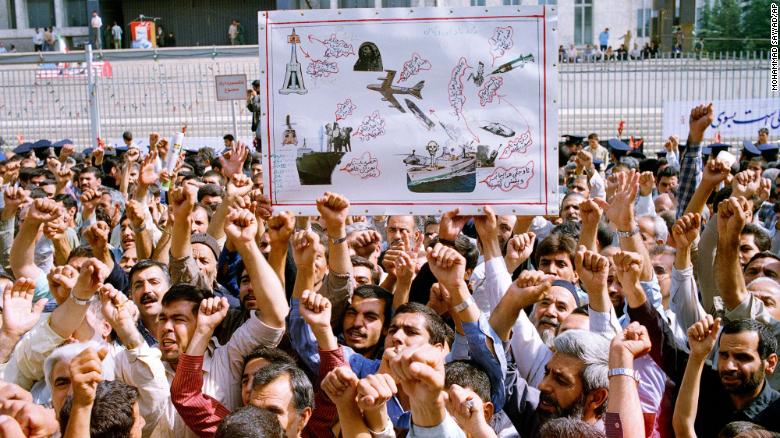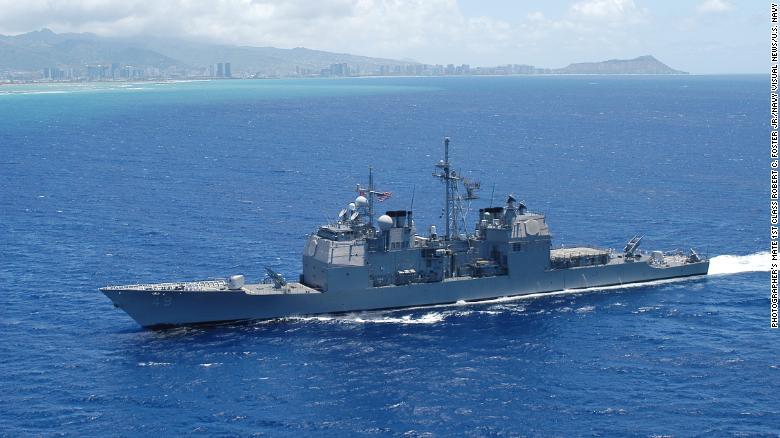In 1988, a US Navy warship shot down an Iranian passenger plane in the heat of battle

(CNN)Two days before a Ukrainian passenger plane went down over Tehran in the fog of battle this week, Iranian President Hassan Rouhani reminded the world not to forget about something eerily similar — the shootdown of an Iran Air jetliner by a US Navy ship in 1988.
Iran Air Flight 655, an Airbus A300 with 290 people on board, was blown from the skies by a missile fired from the guided-missile cruiser USS Vincennes as it flew over the Persian Gulf from Iran to Dubai on July 3, 1988.
Rouhani used that 290 number in a Twitter post on January 6.

“Those who refer to the number 52 should also remember the number 290. #IR655 Never threaten the Iranian nation,” he said in a tweet.
The number 52 refers to the number of sites US President Donald Trump threatened to target in Iran if Tehran retaliated for the US killing of top Iranian general Qasem Soleimani.
The general’s death in a US drone strike on January 3 has ramped up tensions and rhetoric between Tehran and Washington. In 1988, the atmosphere in the Gulf was no less intense.
For more than a year, the US Navy had been committed to protecting commercial shipping moving through the Persian Gulf endangered by the so-called “tanker war,” an offshoot of the 1980-88 Iran-Iraq war.
Iran had been trying to block resupply of Iraq through the waters of the Persian Gulf, laying mines and firing rockets at ships.
The fog of war showed itself in 1987, when an Iraqi warplane mistook the frigate USS Stark for an Iranian tanker and fired two missiles at it. Thirty-seven US sailors were killed.
On April 14, 1988, an Iranian mine struck the frigate USS Samuel B. Roberts, almost breaking the ship in half.
Four days later, US warships tasked with taking out Iranian oil platforms in retaliation exchanged missile fire with and sank an Iranian ship.
The Persian Gulf was no less chaotic on July 3, 1988, when Iran Air Flight 655 took off from Bandar Abbas, a joint military-civilian airport to which the Iranian military had moved some of its F-14 fighter jets, according to a US Navy investigation of the shootdown.
The US military believed those Iranian F-14s were equipped with Maverick missiles that could strike US ships within a radius of 10 miles (16 kilometers).
A day earlier, one of those F-14s had been warned off by the cruiser USS Halsey when it came too near the US ship.
On the morning of July 3, the Vincennes was engaged in combat alongside the frigate USS Montgomery, exchanging fire with Iranian gunboats that were threatening a Pakistani tanker in the Gulf, according to the US Navy report.

Thousands of Iranians chanting “Death to America,” participate in a mass funeral for 76 people killed when the USS Vincennes shot down Iran Air Flight 655, in Tehran, Iran, July 7, 1988. They hold aloft a drawing depicting the incident.
That incident was ongoing when Iran Air 655 left Bandar Abbas, almost half an hour after its scheduled departure time.
Subsequent US Navy investigations of the incident showed the Iranian airliner was in an approved commercial airway and was identifying itself on air traffic control frequencies as a civilian flight.
But the Iranian pilot was not warned of the ongoing hostilities in the area, even though the Bandar Abbas tower had issued warnings on similar previous occasions during the war, according to the US report.
The reports also note that while the Iranian jetliner did not respond to warnings from US warships, its crew would not have been monitoring the channels those were broadcast on.
Aboard the USS Vincennes, the ship’s captain was getting information that an unknown aircraft contacted by radar was not responding to calls. He was also told incorrectly that this contact could be an Iranian F-14.

The guided-missile cruiser USS Vincennes
If the unknown aircraft was carrying those Maverick missiles, the US captain had less than five minutes to decide if his ship was in danger, according to the US report.
Under orders issued after the USS Stark was hit by missiles a year earlier, essentially designed to err on the side of protecting US lives — and with just minutes to decide if his vessel was within range of missiles carried by an Iranian warplane — the captain of the Vincennes gave the order to fire.
Seven minutes after takeoff, the Iran Air Airbus A300 was struck by surface-to-air missiles fired from the US cruiser.
The US military later called it “a tragic and regrettable accident.”
Iran sued the US government in the International Court of Justice in 1989. In 1996, the US and Iran agreed to settle the suit, with the US paying tens of millions of dollars in compensation to the victims’ families.
Two days after Ukraine International Airlines Flight 752 went down near Tehran on January 8, world leaders were saying it was likely that Iranian anti-aircraft missiles had fired at the jet by mistake.
Canadian Prime Minister Justin Trudeau, whose country lost 63 citizens in the crash, said Canada’s intelligence, and intelligence provided by allies, shows that the Boeing 737 was shot down by an Iranian surface-to-air missile.
British Prime Minister Boris Johnson echoed Trudeau.
The plane went down just minutes after takeoff and within hours of Iran firing ballistic missiles at bases in Iraq housing US troops.
At the time, the world was on edge wondering if Trump would order a retaliatory strike on Iran.
It was not unlike the environment over the Persian Gulf in 1988.
“Somebody could have made a mistake on the other side,” Trump said Thursday about the downing of the Ukrainian jet. “I have my suspicions.”

